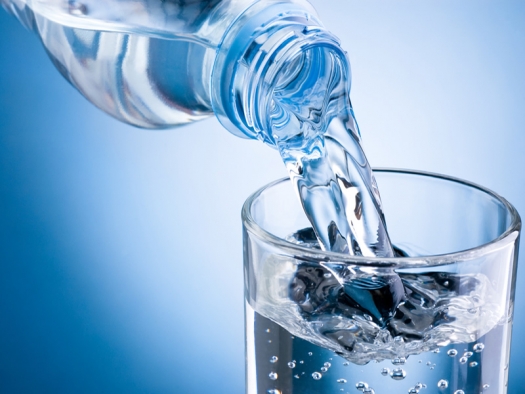WaterGlassBottle.jpg

Photo by Hyrman, © 2013 / dreamstime.com
Water. It is essential for our survival, but it can also contain healing properties that go far beyond simple sustenance. One of these waters has come to the attention of the FAIM team. It is called Kaqun (pronounced “Cocoon”). Much research has been done on Kaqun. Some of these trials can be reviewed on the European Kaqun System™ website.
Kaqun has been used in cases of burns, eczema, diabetes, cancer, motor system abnormalities, recovery from surgical procedures, dermatology, and other chronic diseases. Kaqun water is used in baths and consumed as drinking water. The baths deliver oxygen through the skin. The Kaqun drinking water penetrates the mucous membranes of the stomach and gastrointestinal tract. Through its absorption qualities, oxygen penetrates the tissues. There are currently several spas offering baths, drinking water, and gels in Hungary, Singapore, Italy and Slovakia. Facilities are looking to open in Santa Monica, California and Las Vegas, Nevada soon. In the meantime, people can order the Kaqun to drink for daily consumption by going to Kaqun Water West. Kaqun gels are also available to compliment the therapy if appropriate.
FAIM’s interest rests in how Kaqun affects the body. In order to describe the apparent action within the tissues, it will be helpful to first give some background details. Cells in the body resonate at various frequencies. These levels fluctuate depending on the cell activity. The membrane potential of a healthy cell is around -70mV. If inflammation is present the membrane potential drops to <-50mV. If there is cancer it is very low, <-20mV. Healthy cells will fluctuate between -70mV and -20mV, as cell division happens at the -20mV level. However, healthy cells rebound back up to -70mV. Cancer cells remain at <-20mV, explaining why there is uncontrolled division. Once the cell returns to -70mV no division can occur.
Every cell in the body is powered by small organelles called mitochondria. They take glucose from food that is eaten and oxygen from the air humans breathe, converting them into ATP energy which cells need to keep organs functioning. Mitochondria also coordinate cell communication, cell death, cell growth and cell differentiation. Three specific tasks to look at more closely include ATP energy production, Redox signaling, and production of CO2. Let’s look at each one of these tasks in detail.
ATP is produced in the mitochondria delivering energy to the cell so it can remain at -70mV and function properly. This is a vital activity for the life and health of the cell.
Secondly, Redox signaling molecules (RS and ROS) are created. When the mitochondria is functioning well it produces equal amounts of RS and ROS so virus and bacteria can be successfully attacked. When in balance, they will neutralize each other. However, when the mitochondria is not functioning properly through electrolysis and salts in the cell, free radicals are produced creating a downward spiral.
Thirdly, the mitochondria produces CO2 as a result of respiration. When we breathe in, oxygen (O2) attaches to the hemoglobin of the red blood cell in the lung. The blood transports the O2 to the cells. The CO2 which is produced by healthy activity of the mitochondria binds to the hemoglobin by kicking off the O2. This makes the O2 available to the mitochondria which is essential for healthy functions. If the mitochondria is not operating at full potential, there is less CO2 production. CO2 is not available to displace the O2 so the O2 remains attached to the hemoglobin and is unavailable to the cell. Depriving the cell of O2 compromises the activity of the mitochondria and begins a cascade toward cancer of the cell. In addition, cancer cells cannot survive in an oxygen environment so this lack of oxygen further promotes survival of the cancer. This makes it clear how essential the production of CO2 and the ultimate exchange of CO2 for O2 is within the hemoglobin.
So how does this relate to Kaqun? Kaqun is extremely high in O2. Tests have shown Kaqun to have an oxygen reading of approximately 200, compared to carbonated water having an oxygen reading of 5. The O2 in Kaqun gets delivered to the cell without using hemoglobin. The O2 is released from the water due to a pressure difference in the cell. The O2 gives the mitochondria what it needs to function properly to produce ATP energy. Redox activity within the mitochondria is triggered by the O2. If the life span of the cell is over, and there is adequate energy produced by the mitochondria, apoptosis (death) of the cell occurs. In the case of cancer cells, the mitochondria is dysfunctional and cell death happens by way of necrosis instead, creating toxicity. In addition, research and anecdotal experience shows the high levels of O2 trigger cell differentiation, meaning an unhealthy cancer cell can become healthy once again. Tumors that were malignant may become benign. From this, one can see how increased levels of O2 can create health at the cellular level, which is the foundation for whole body harmony.
But there are even more interesting responses in the body to Kaqun. Again, some background information to clarify this point is helpful. Vitamin C and O2 are essential for optimal cell health. Most animals produce Vitamin C from sugar using a 4 enzymatic process. Humans and guinea pigs have only 3 of these enzymes and thus cannot produce their own Vitamin C. The 4th enzyme, which is missing, performs an oxidizing function. Kaqun delivers the oxygen, completing this oxidizing process. As a result, the human body can produce Vitamin C.
Normal levels of Vitamin C in the human body are between 50-65 Umol. In cancer, patient’s readings are typically below 35 Umol. Chemo and radiation lower this value even further. People who drink Kaqun and use the baths will average 80 Umol without additional supplementation of Vitamin C.
This is important when we look at cell respiration. Cells produce HIF-1 and VEGF as byproducts of respiration. The enzyme which breaks down HIF-1 and VEGF can only be produced when there is adequate Vitamin C and O2. With these two elements present HIF-1 and VEGF are neutralized. Without it the cancer cascade can progress. Research shows VEGF is down regulated by 80% with Kaqun. One can see how important the multi-function of O2 and Vitamin C is in the body. Practitioners are finding the level of Vitamin C in a diagnosed cancer patient is a more accurate predictor of survival than the type and stage of the cancer.
The protocol for the use of Kaqun is quite simple. Patients who are ill take three 50 minute baths in the Kaqun water daily for 2 weeks. Then there is a 10 day break. This “round” is repeated 2-3 times. During this 7-9 weeks period the patient drinks one liter of the Kaqun water daily. For people who wish to drink Kaqun as a preventative, one can consume ½ liter daily.
Practitioners using this protocol view it as an adjunct therapy to a complete program against cancer including, but not limited to, possible chemo and radiation therapy, life style changes, diet changes if needed, and emotional counseling. This therapy alone is not a magic bullet, but many people give credit to Kaqun for assisting in their recovery.
For more information, visit the European Kaqun System™ website.


